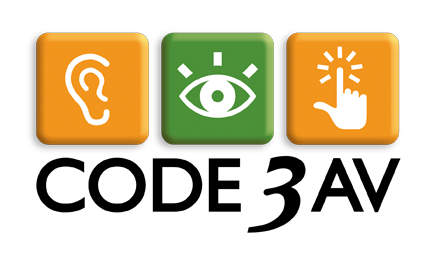Well.. What is a system?
Generally – a system is “a set of things working together, dedicated to a task – an organized framework or method.” In audiovisual terms, a system is some combination of equipment integrated together to allow for a space to be used for communication purposes. That purpose might be meeting, teaching, training, entertaining, informing, warning, performing or any number of other purposes.
This “combination of equipment” that is supposed to work together is usually made by several different companies and manufactured in several different countries. As integrators, we choose the best or most cost-effective devices and integrate them into a cohesive, reliable and easy to use system for the customer. But what makes a system easy to use?
Systems that are easy to use have a well defined purpose.
Systems that are easy to use have a well defined purpose. As noted above, a system should be performing a dedicated task. Just because a system CAN do something, doesn’t mean it should. The more precisely a task can be defined, the easier the system becomes to use. The more you can narrow down that definition, the fewer choices anyone needs to make. If you can limit choice, you can keep the interface very simple.
Just because a system CAN do something, doesn’t mean it should.
Let’s explore this a little. If a room has a single display and a single input, I almost don’t need a control interface at all. I can detect when a device is connected to the input. I can assume they want to show that on the only display. I turn the display on and send the video to it. When I no longer detect video at the input, I turn the display off. It’s automatic. The purpose of the system is very well defined.
But what happens when we add a second display? Now we have choices. Does the user want to send video to one of them or both? Do we need an interface now – maybe even a touch panel? That depends. We may not know how the room will really be used, so we might provide functionality and complexity that isn’t required. Sometimes complex functionality is added to a system because the designer doesn’t really know how the space will be used, so they provide options for any and all uses, when the reality is – the space may only ever be used in one specific way nearly all of the time.
The truth is, adding a second display will only increase the complexity of the system if we allow choices. If we can eliminate choice – for example, can we assume that the single input will always go to both displays, and both displays will always turn on? If so, we don’t have a more complicated system. I can keep the system simple. No user interface required.
This can only be done after fully understanding how the system will be used by the end user. The better we define how a system will be used, the more focused and simpler we can make the system for the user. This requires the customer to know how they intend to use the space.
The better we define how a system will be used, the more focused and simpler we can make the system
Often a user needs time with the system before they can define how they use it. We call this period the “system test drive.” We train and turn the system over and ask for feedback after 30 or 60 days. At that point, we schedule a return visit and discuss what works for them and how we can make things easier to use. Hopefully, we did our homework ahead of time and there are very few changes made after the test drive, but also – hopefully we can make a few things better. Did we find some choices and functions that rarely get used? Can we eliminate or hide those for admin use and keep the common functions simple and accessible? Sometimes they need to kick the tires and take it for a spin first.
